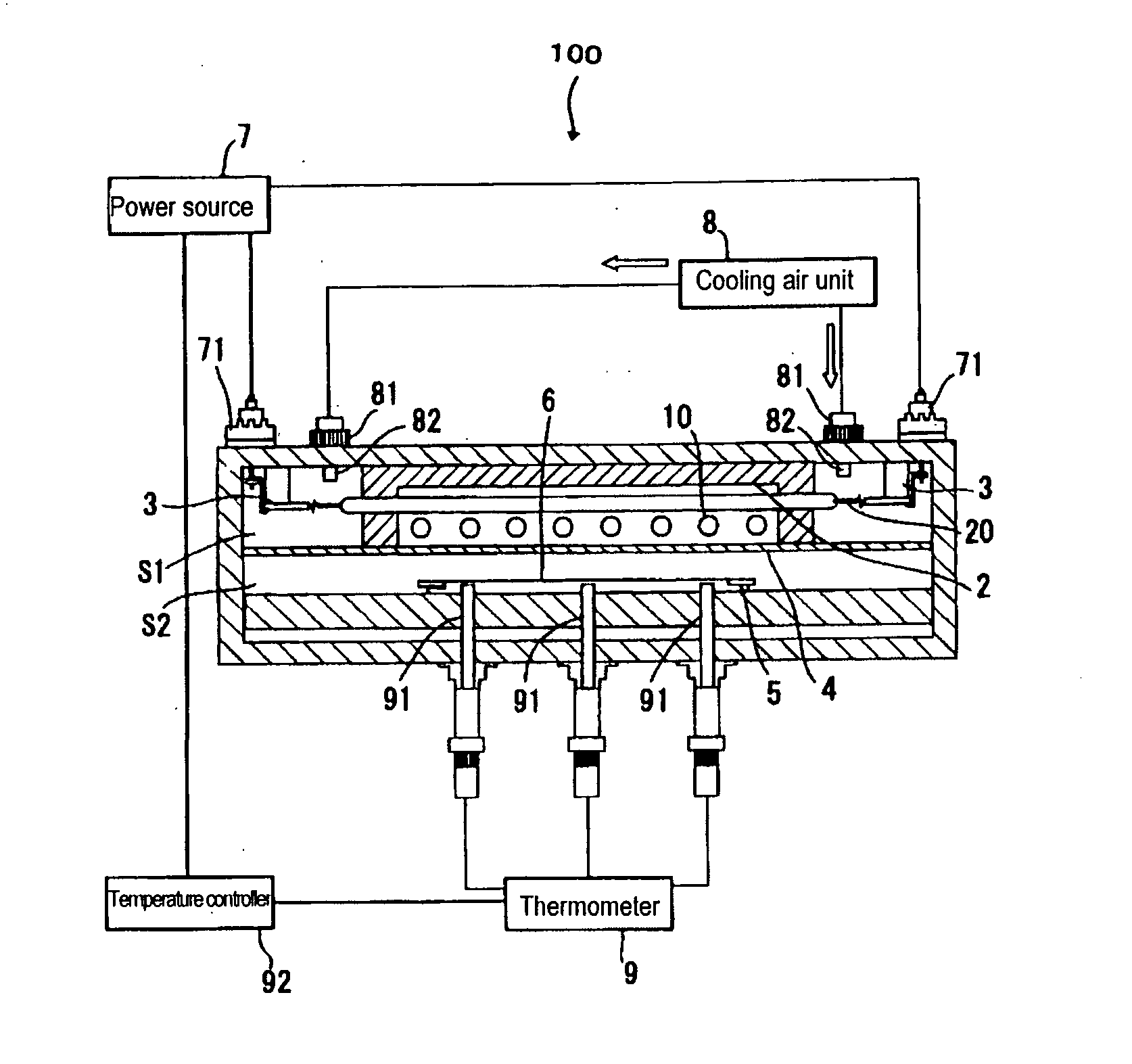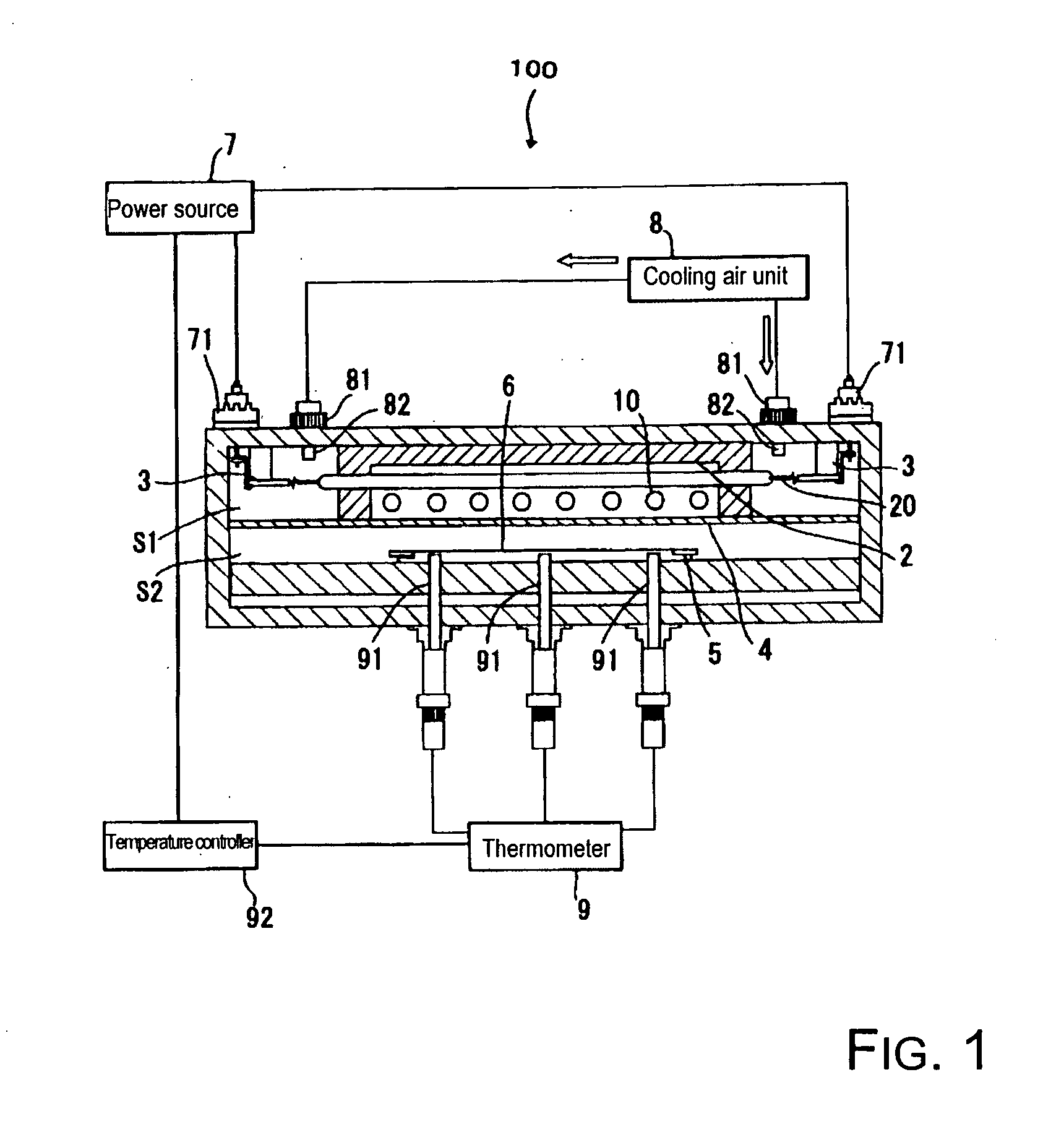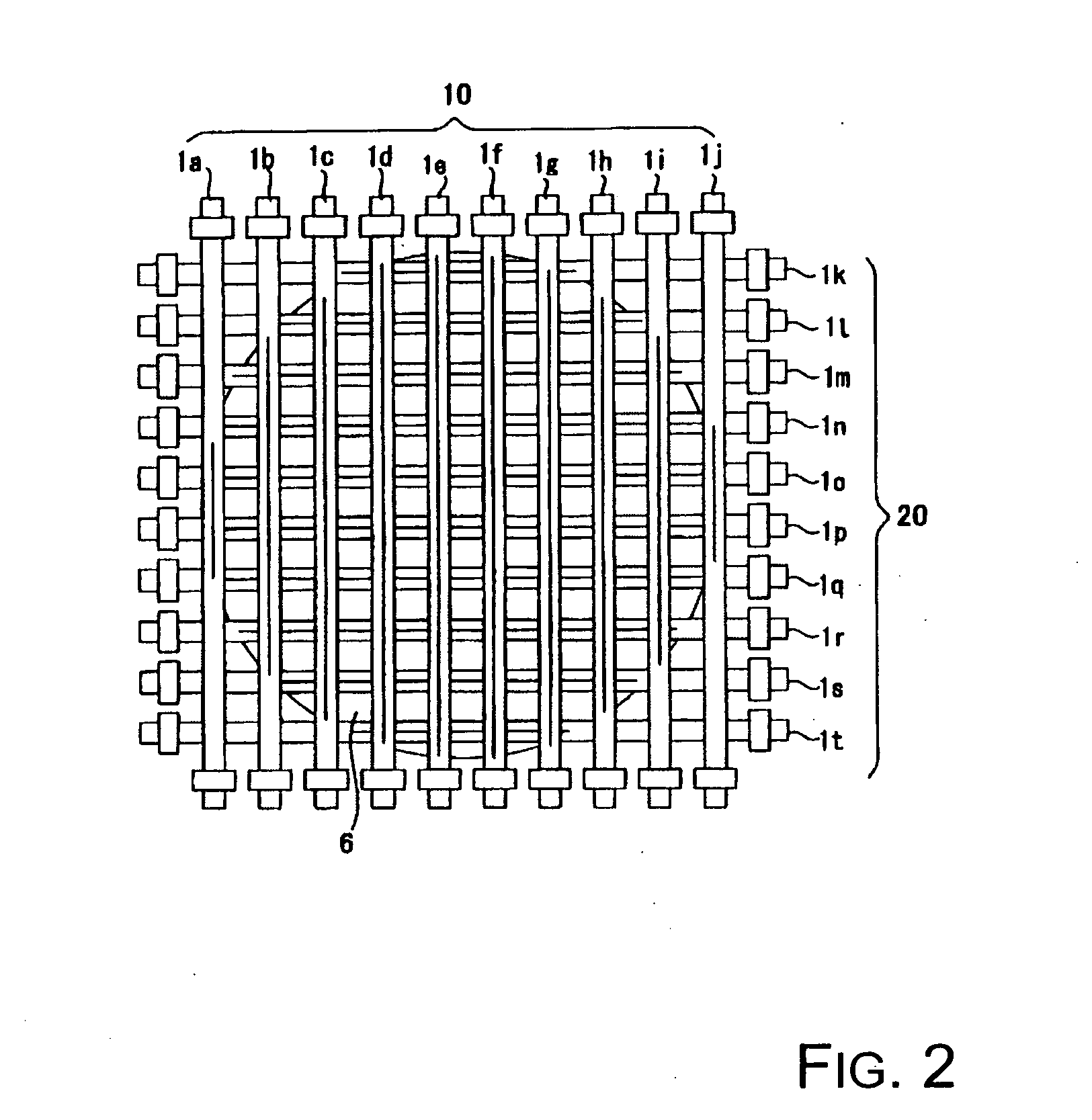Heater and heating device with heaters
a heating device and heater technology, applied in the direction of transit-tube circuit elements, structural circuit elements, cathode-ray/electron beam tube circuit elements, etc., can solve the problems of inferior goods, crystal transition defect, and disadvantage described below in the above described conventional heating device, so as to reduce the size of the device and reduce the uniformity of temperature distribution
- Summary
- Abstract
- Description
- Claims
- Application Information
AI Technical Summary
Benefits of technology
Problems solved by technology
Method used
Image
Examples
first embodiment
[0087] the heater of the invention is described below with reference to FIGS. 7(a) &7(b). As is shown in FIGS. 7(a) &7(b), the heater 1 is made of a transparent material, such as, for example, silica glass or the like. It has a bulb 11 with a cross section which has an elliptical shape in a plane which orthogonally intersects its axial direction. “Elliptical shape” means all shapes (for example, an oval shape and the like) in which the length a of the major diameter in the longitudinal direction of the above described cross section is larger than the length b of the minor diameter in the direction perpendicular to the longitudinal direction of the above described cross section. The above described cross section can also be circular in the bulb 11.
[0088] For the bulb 11, on one of the ends, metal foils 13a, 13b, are installed and a hermetically sealed portion 12a is formed by a pinch seal. On the other end of the bulb 11 metal foils 13c, 13d are installed and a hermetically sealed po...
second embodiment
[0115] the heater of the invention is described below with reference to FIG. 8. In FIG. 8, the parts corresponding to the same parts as in FIGS. 7(a) &7(b) are provided with the same reference numbers as in FIG. 7(a) and (b).
[0116] As is shown in FIG. 8, for a heater 40 according to the second embodiment, there are two filament parts 14a, 14b which are arranged coaxially along the axis of bulb 11. Between the filament part 14a and the filament part 14b, an insulator 41, for example, made of silica glass, is arranged such that there is a space between the filament part 14a and the filament part 14b. Furthermore, the insulator 41 can border the filament parts 14a, 14b. The lead wire 15d passes through a through opening 42 which is provided in the insulator 41. For the lead wire 15d, the outside of the area which is opposite the filament part 14b is covered with an insulating tube 16b. One end of the lead wire 15d is electrically connected to a metal foil 13d, while the other end is el...
third embodiment
[0120] the heater in accordance with the invention is described below with reference to FIG. 9. In FIG. 9, the parts corresponding to the same parts as in FIGS. 7(a) &7(b) are provided with the same reference numbers as in FIGS. 7(a) &7(b).
[0121] As is shown in FIG. 9, for a heater 50, there are two filament assemblies 51, 52 located opposite each other in the bulb 11, separated by an insulator 53. The two filament parts 14a, 14b are arranged coaxially along the axis of the bulb 11. The insulator 53 is arranged such that there is a space between the filament part 14a and the filament part 14b. It is advantageous for the distance G4 between the filament part 14a and the filament part 14b to be in the range from 3 mm to 8 mm, so that the variation of the intensity distribution of the light which has been emitted onto the article to be processed can be reduced to an extreme degree and no unwanted discharge occurs between the filament parts 14a &14b, which lie in succession in the longi...
PUM
 Login to View More
Login to View More Abstract
Description
Claims
Application Information
 Login to View More
Login to View More - R&D
- Intellectual Property
- Life Sciences
- Materials
- Tech Scout
- Unparalleled Data Quality
- Higher Quality Content
- 60% Fewer Hallucinations
Browse by: Latest US Patents, China's latest patents, Technical Efficacy Thesaurus, Application Domain, Technology Topic, Popular Technical Reports.
© 2025 PatSnap. All rights reserved.Legal|Privacy policy|Modern Slavery Act Transparency Statement|Sitemap|About US| Contact US: help@patsnap.com



